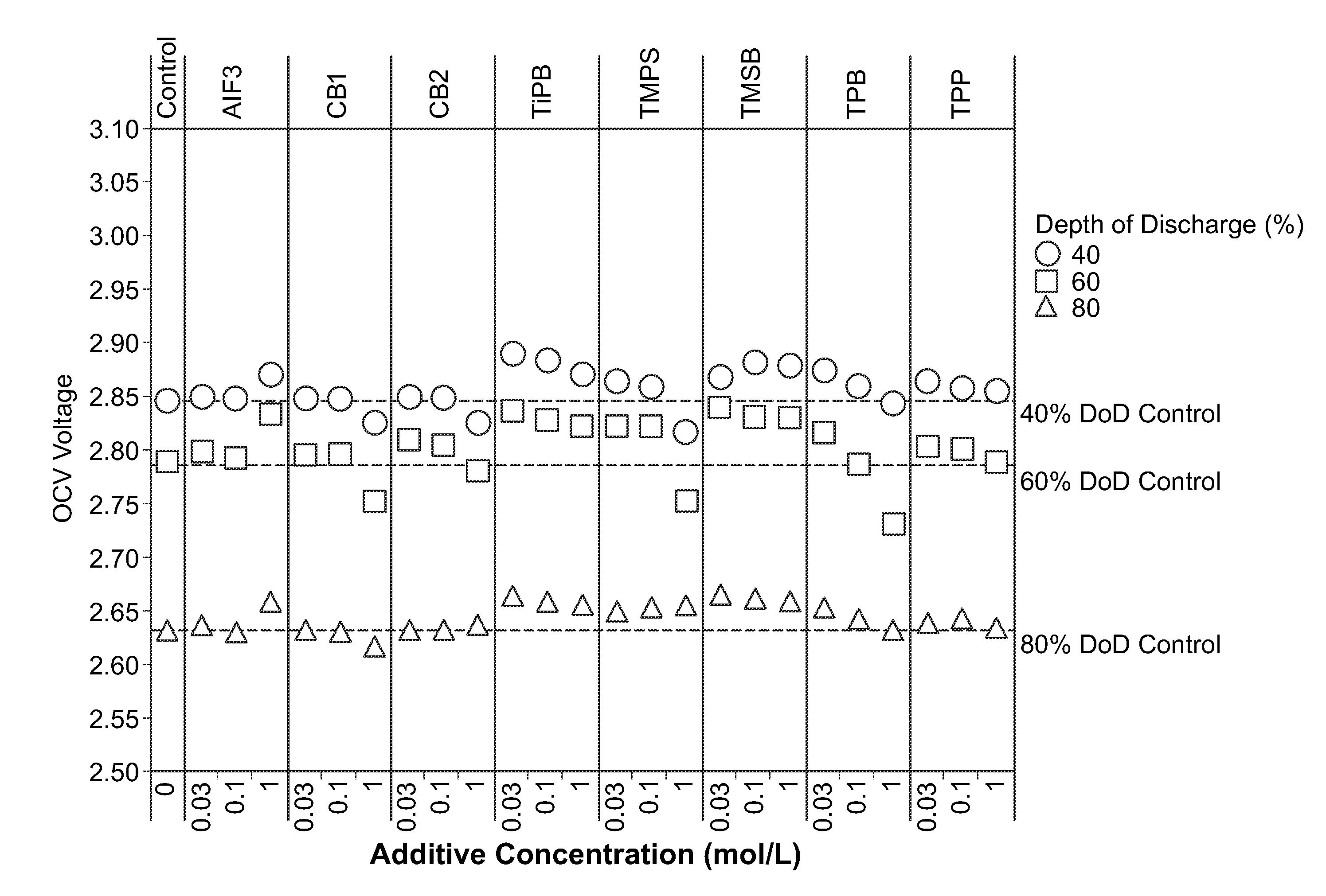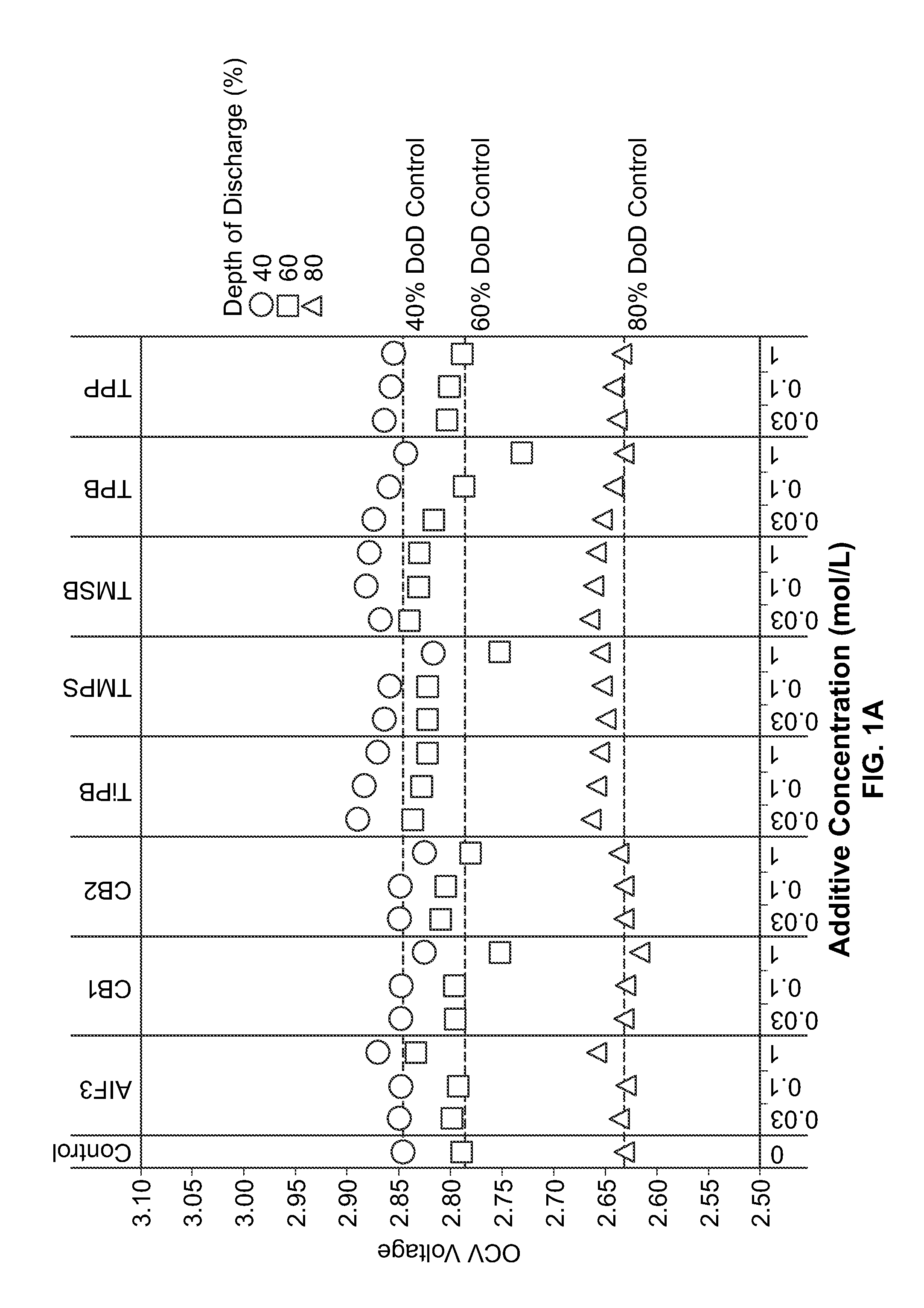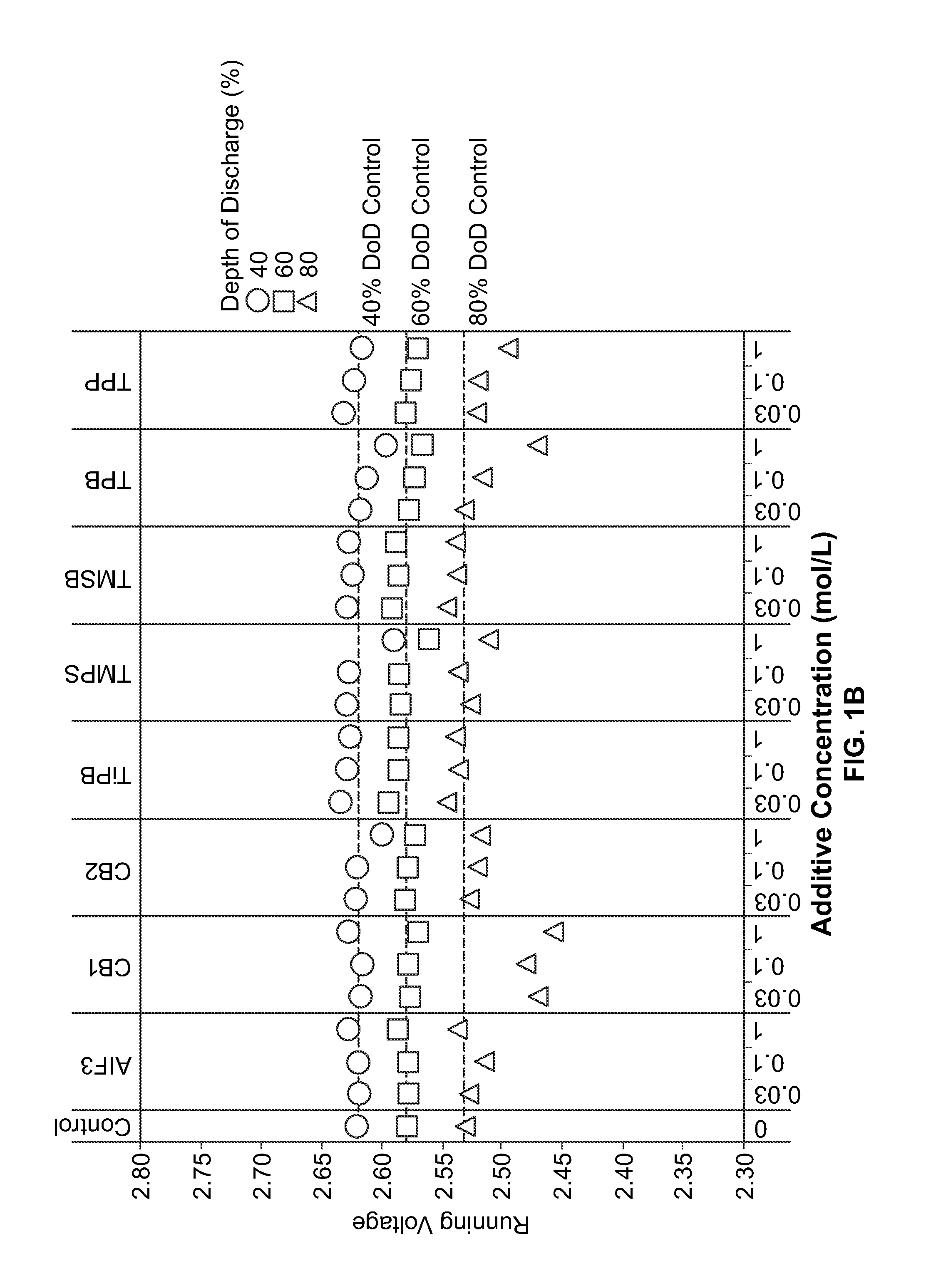Electrolyte Materials For Batteries And Methods For Use
a technology of electrolyte materials and batteries, applied in the field of electrolyte materials for batteries and methods for use, can solve the problems of comparatively low power, high overall reaction potential, and certain challenges of lithium/carbon-fluoride batteries, so as to improve pulse power performance, and improve pulse power performance
- Summary
- Abstract
- Description
- Claims
- Application Information
AI Technical Summary
Benefits of technology
Problems solved by technology
Method used
Image
Examples
examples
Fabrication of Electrochemical Cells Containing Additives
[0073]Materials and Synthetic Methods. All cells were prepared in a high purity argon filled glovebox (M-Braun, oxygen and humidity contents were less than 0.1 ppm). Unless otherwise specified, materials were obtained from commercial sources (e.g., Sigma-Aldrich, Advanced Research Chemicals Inc., Alfa Aesar) without further purification.
[0074]Electrode Formulation Summary. CFx was coated through a milling and / or annealing process. Milling vessels were loaded with CFx, carbon precursor (PVDF) (5 wt. %), and solvents. The vessels were sealed and then milled. After milling, solvents were evaporated at about 60 degrees C. and, if necessary, samples were annealed under flowing nitrogen gas. CFx / SVO hybrid electrodes were prepared with 50 wt. % SVO, 35 wt. % coated CFx, 4 wt. % carbon black, and 11 wt. % binder. For all the electrodes, the solid components were (SVO, CFx and carbon) premixed with mortar and pestle prior to preparing...
PUM
| Property | Measurement | Unit |
|---|---|---|
| temperature | aaaaa | aaaaa |
| humidity | aaaaa | aaaaa |
| open circuit voltage | aaaaa | aaaaa |
Abstract
Description
Claims
Application Information
 Login to View More
Login to View More - R&D
- Intellectual Property
- Life Sciences
- Materials
- Tech Scout
- Unparalleled Data Quality
- Higher Quality Content
- 60% Fewer Hallucinations
Browse by: Latest US Patents, China's latest patents, Technical Efficacy Thesaurus, Application Domain, Technology Topic, Popular Technical Reports.
© 2025 PatSnap. All rights reserved.Legal|Privacy policy|Modern Slavery Act Transparency Statement|Sitemap|About US| Contact US: help@patsnap.com



